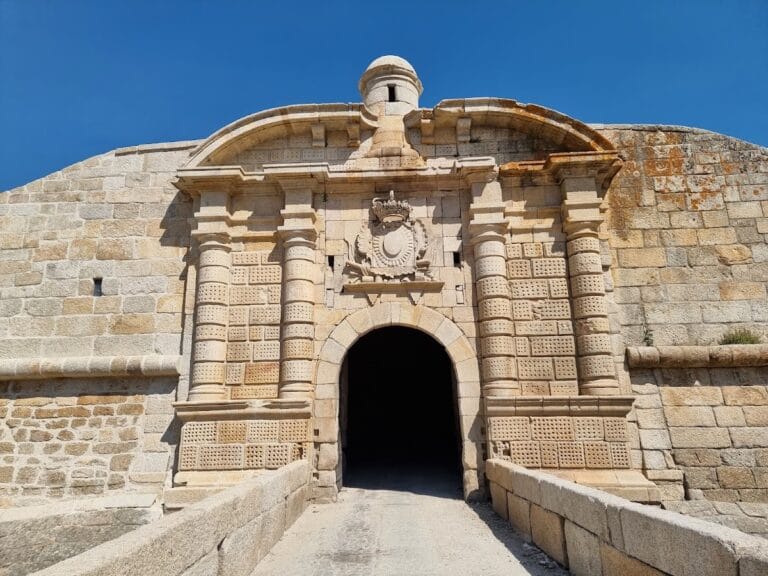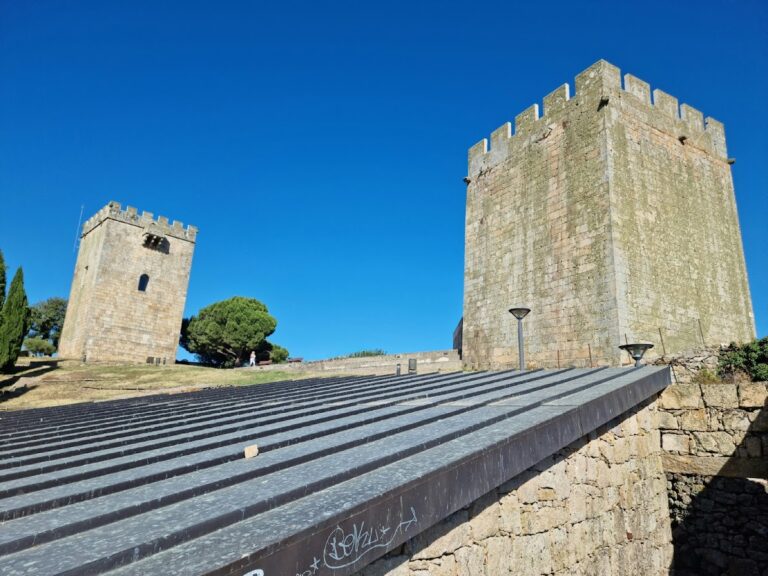Castle of Castelo Bom: A Historic Fortress in Portugal
Visitor Information
Google Rating: 4.4
Popularity: Low
Google Maps: View on Google Maps
Country: Portugal
Civilization: Medieval European
Remains: Military
History
The Castle of Castelo Bom is located in the municipality of Castelo Bom, Portugal. Its origins trace back to the Bronze Age when the site was occupied by a fortified settlement known as a castro, a type of ancient hillfort common in the region. Evidence of this early occupation includes the discovery of a pistiliform bronze sword, which was later preserved in the Museum of Guarda.
During the 12th and 13th centuries, Castelo Bom stood on a contested frontier between the Kingdom of Portugal and the Kingdom of León. Initially, the area remained under León’s control until 1282, when Portuguese King D. Dinis successfully captured the castle. Recognizing the strategic value of the site, D. Dinis immediately ordered its fortification and granted a Foral, or charter, to establish legal and administrative structures in 1296. The following year, the Treaty of Alcañices formalized the incorporation of Castelo Bom and surrounding lands into the Portuguese kingdom.
Between the late 13th and early 14th centuries, extensive works strengthened both the castle and the surrounding town walls. In the 16th century, further fortification efforts took place under the direction of Francisco de Anzinho and Garcia Fernandes, efforts documented by Duarte de Armas in his 1509 Book of Fortresses. This period saw the renewal of the Foral by King Manuel I in 1510 and the start of repair works in 1512, supervised by João Ortega and the mason Pero Fernandes. These interventions aimed to adapt the fortress to advances in military technology and to maintain its defensive capabilities.
During the 17th century, amid the Restoration Wars in which Portugal sought to regain independence from Spain, Castelo Bom played a key role as a frontier defense. The castle was equipped with artillery, and a bastion tower was used as a jail and provided refuge for provincial governors of the Beira region. Despite its military importance, the castle’s defenses were tested in 1762 when it was besieged and captured during the Seven Years’ War.
The early 19th century brought further turmoil as the castle was destroyed during the Napoleonic invasions. Following these events, the municipality of Castelo Bom was dissolved in 1834, which contributed to the gradual decline and ruin of the castle’s defensive structures. Although the keep tower survived into the mid-20th century and was considered an important cultural element, it was demolished by a private owner who sought to build a shelter for donkeys on the site.
Recognizing its historical significance, the castle was classified as a National Monument in 1946. Restoration and conservation efforts were later undertaken between 1987 and 1988 by the Direcção Geral dos Edifícios e Monumentos Nacionais (DGEMN). Subsequent improvements included the construction of a viewpoint in 1999 to enhance understanding of the strategic position the fortress held. Traditionally, Castelo Bom is thought to be among the seven castles represented in the Portuguese national coat of arms and flag, highlighting its enduring role in the defense of Portugal’s borderlands.
Remains
The Castle of Castelo Bom occupies a rocky hill rising approximately 725 meters above sea level, overlooking the Rio Côa valley. Its position provided commanding views over the river crossing, essential for controlling movement along this frontier. The fortress’ layout follows an irregular, nearly rectangular plan, enclosed by walls accompanied externally by a barbican—a fortified outwork with a curved façade that protected the settlement’s perimeter, though much of this structure is incomplete today.
Access to the castle was controlled by the town gate, known as the Porta da Vila, situated on the east side. This gate features a curving outer face and a pointed arch typical of medieval military architecture. Inside, the gate’s passage is vaulted and paved unevenly with stone, and remnants of metal hinges remain in place, suggesting the presence of sturdy wooden doors in the past. Within the enclosure, interior walls include a stone staircase granting access to the adarve, the walkway along the wall tops, and a rectangular tower, now in ruins, located along the western and northern walls.
The defensive walls themselves consist of a double layer, between which steps and doorways are located. Exterior doors present rectangular shapes, while interior doors have rounded tops crowned by covered balconies with openings known as machicolations—these allowed defenders to drop projectiles on attackers below. The parapets are lined with merlons, the raised sections of battlements, varying in shape between parallelepiped (rectangular prism) and pyramidal forms. Significant defensive features include two main rectangular towers, with one serving as the keep, distinguished by a tiled roof. A circular tower stands to the south and a smaller rectangular tower guards the barbican’s gate to the north. By the early 16th century, some of these towers were already in a state of ruin.
Inside the walls lay the urban area, which accommodated single-family houses alongside several religious buildings. A church with a bell tower occupied the southern sector, complemented by smaller chapels to the southwest and southeast, indicating the integration of spiritual life within the fortified community.
To support the castle’s long sieges and daily needs, several water installations were present. Among these is a rectangular cistern called Poço do Rei, notable for its tiled covering and vaulted interior supported by two archways, accessible through a single entrance. Nearby stands a circular powder magazine constructed from stone and masonry, which provided safe storage for gunpowder; it is known locally by various names such as revelim, rebolim, rebolinho, or polvorim, and features a doorway facing west.
Additional wells vital for the castle’s water supply include the Poço da Escada, an irregular quadrangular masonry well equipped with a stone staircase descending nine steps to the water, and the Poço d’El Rei, a large rectangular stone reservoir covered by a terrace pierced with two square openings for light and vaulted on the inside. Throughout the castle’s walls, much of the stonework exhibits evidence of reuse from older buildings, reflecting a practice common in medieval construction.
Among the visible relics is a stone bearing the coat of arms of the former town, now mounted on the southern wall, though this element was likely relocated from its original setting. Today, the surviving remains of Castelo Bom include sections of the curtain wall, the town gate, a ruined tower, the coat-of-arms stone, the cistern, the powder magazine, a small guardhouse known as an échauguette, and the two wells that once nourished the castle’s defenders.







